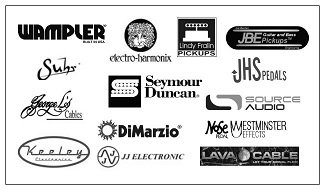5.68 X 3.62 x 2 Inches, 0.85 Ibs
In
the mid-’60s, the world’s first nuclear company, Victoreen Instruments,
launched Jordan Electronics. They started out manufacturing
transistorized guitar amps and debuted the first commercially successful
U.S. based plug-in effect at the 1966 NAMM Show, the Boss Tone, though
it didn’t hit the market until 1967. At the time, fuzz was still a new
frontier for most guitarists, but nothing else on the market looked or
sounded quite like the Boss Tone (a true testament to the ingenuity of
Jordan Electronics’ owner, George Cole, and head engineer, Bob Garcia).
The original unit is a small 1¾ by 2¼ inch molded plastic box that plugs
directly into the guitar’s output jack. Unfortunately, plug-in effects
never quite captured the practicality of a good old-fashioned stompbox,
so we’ve created a floor-based pedal that features the same unique
tone.
this pedal requires 9V DC NEGATIVE CENTER. 4MA
CONSUMPTION. DO NOT USE MORE THAN 9V DC, OR YOUR WARRANTY WILL BE
VOIDED. THE plugin DOES ALLOW FOR BATTERY OPERATION VIA A SINGLE 9V
BATTERY. JUST LOOSEN THE TWO REAR SCREWS FROM THE ENCLOSURE AND THE
BACKPLATE WILL SWING OPEN. ON THE INSIDE YOU WILL SEE A BATTERY CLIP TO
INSTALL THE BATTERY INTO
Since
the fuzz effect was invented in the early sixties, guitar players have
gone to great lengths to achieve the perfect fuzz tone. Legends say that
Duane Allman placed his fuzz pedal in the freezer between sessions to
cool down the transistors, and that Roger Mayer meticulously modified
Hendrix’s Fuzz Faces beyond recognition in search of an elusive, magical
fuzz experience. Fortunately, even apart from these mythological
methods, there’s one trick that always works: use a dying battery.
Inherently simple devices like fuzz circuits are extremely sensitive to
the amount of voltage that they receive, thus any change in the voltage
from your power supply will cause drastically different tones.
Guitarists eventually caught on to this hack and began draining their
batteries to try and find the sweet spot for their fuzz pedal. A good
idea in theory, but who has time for that? Then, just a few years ago, a
certain unnamed guitarist reached out to me for a practical solution
for this technique– and the Volture was born.
The Volture is a
modern day device for your vintage fuzz circuitry. Simply place it in
between your power supply and your pedal, and you can precisely trim the
input voltage and perfectly replicate the tone of a dying battery. As
the song says, “Power is made by power being taken.”
Though we
developed it specifically for vintage fuzz circuits, the Volture will
work on any fully analog pedal. In fact, you might be surprised by the
trippy sounds you find lurking in your favorite overdrive or distortion.
THIS PEDAL REQUIRES STANDARD 9V DC NEGATIVE POWER, CONSUMES 12MA, AND MEASURES 3.6"X1.5"X1"
The "Legends Of Fuzz'" series is a collection of the world's most historic, rare, and sought after circuits.
At
JHS, fuzz pedals have been in our lineup for over a decade. We have
designed original circuits, replicated classics, and we have seen the
trend of fuzz popularity come and go. The "Legends Of Fuzz'" series is
our tribute to the most important fuzz circuits ever made. It is our way
of ensuring that the stories of these effects live on in the music that
you are going to make. From the earliest days of fuzz in the mid-60s
London scene to the 1990s ex-Soviet military factories that brought the
Big Muff back to life, fuzz tells a story, and that story includes
guitarists just like you. There is nothing more primitive than plugging
your guitar into a vintage fuzz circuit; it is raw, untamed, and so pure
that it pushes the boundaries of what your instrument can accomplish.
Plug into a fuzz and plug into sixty years of beautifully broken sound.

